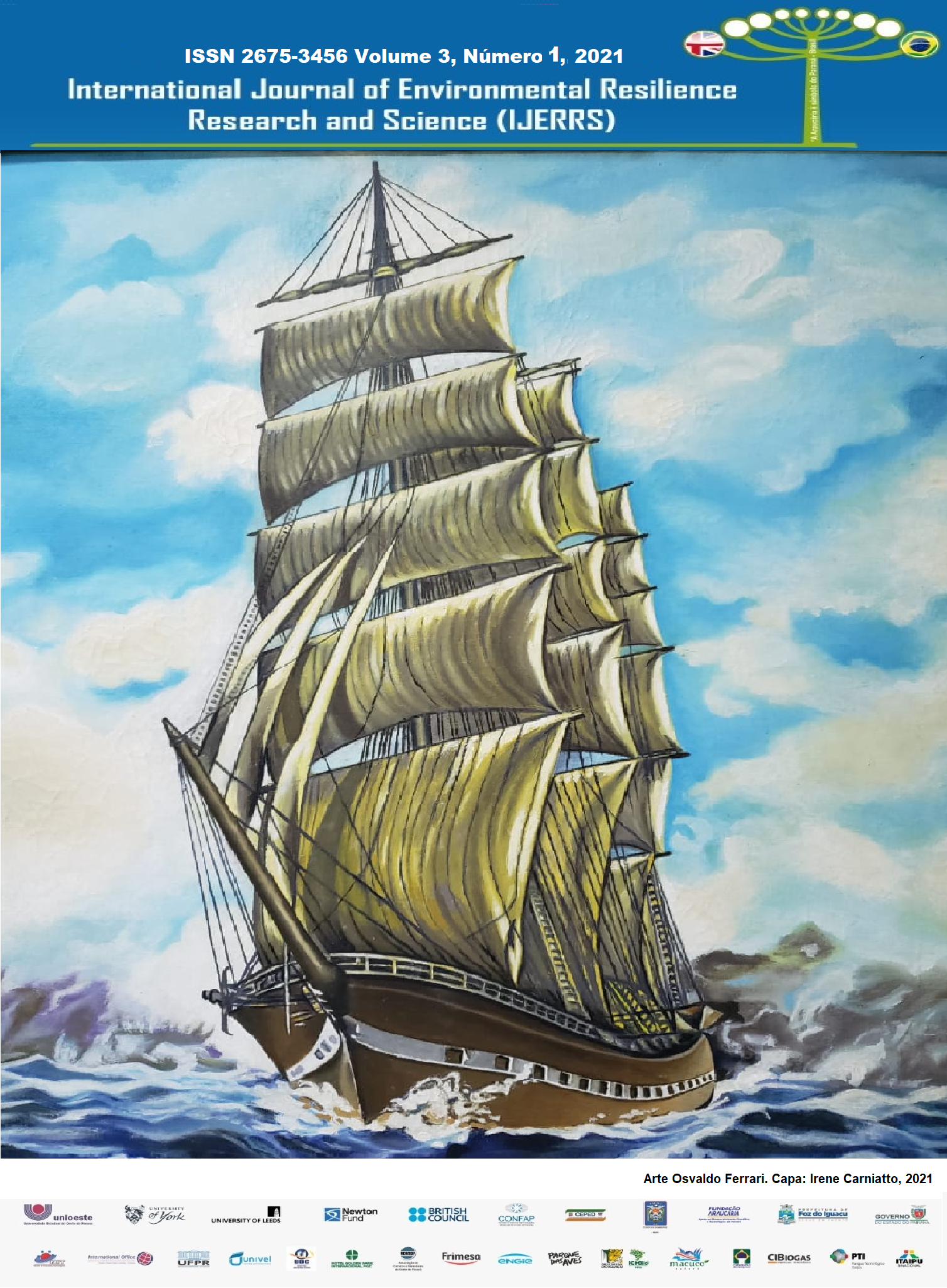THE ADVANTAGES OF SOLAR TRACKER / AS VANTAGENS DO SISTEMA SOLAR TRACKER
DOI:
https://doi.org/10.48075/ijerrs.v3i1.26451Palabras clave:
Rastreador Solar, Sistema Fotovoltaico, Automação 4.0Resumen
Solar tracking systems allow greater efficiency of a photovoltaic system by continuously adjusting its position in relation to the sun, thus increasing the generation of electrical energy. The integration of photovoltaic solar tracking systems in a photovoltaic plant allows the energy needs of users to be met more widely in a smaller area. This integration is facilitated by the existence of technologies such as access to the Internet via Wi-Fi, which allows the development of systems to be included in the domain of “Cloud” and Automation 4.0. In this study, an "open circuit" solar tracker, the first of its kind designed in Brazil on a plant scale, was designed and developed, which runs the tracking algorithm in the service programmed in a PLC, which has a Wi-Fi module integrated. This study opens the possibility of integrating power generation systems in the Cloud domain, which among other things, allows constant monitoring of the system's behavior with Solar trackingCitas
Randall, J.; Lieberman, M. Passive trackers for photovoltaics. In Proceedings of the Annual
Meeting—American Section of the International Solar Energy Society, New Orleans, LA, USA, 7–12
October 1984; pp. 529–533.
Huang, B.-J.; Huang, Y.-C.; Chen, G.-Y.; Hsu, P.-C.; Li, K. Improving solar PV system efficiency
using one-axis 3-position sun tracking. Energy Procedia 2013, 33, 280–287.
Said, A., Alaoui, S. M., Rouas, Y., Dambrine, G. & Menard, E. (2018). Innovative Low Cost
Cleaning Technique for PV Modules on Solar Tracker. IEEE 2018.
Melo, A.G.; Filho, D.O.; De Oliveira Júnior, M.M.; Zolnier, S.; Ribeiro, A. Development of a
closed and open loop solar tracker technology [Desenvolvimento de tecnologia de rastreamento solar
com controle em malha fechada e em malha aberta]. Acta Sci. Technol. 2017, 39, 177–183.
Sidek, M.H.M.; Azis, N.; Hasan, W.Z.W.; Ab Kadir, M.Z.A.; Shafie, S.; Radzi, M.A.M. Automated
positioning dual-axis solar tracking system with precision elevation and azimuth angle control. Energy
, 124, 160–170.
Gutiérrez, S.; Rodrigo, P.M. Energetic analysis of simplified 2-position and 3-position NorthSouth horizontal single-axis sun tracking concepts. Sol. Energy 2017, 157, 244–250.
Senpinar, A.; Cebeci, M. Evaluation of power output for fixed and two-axis tracking PVarrays.
Appl. Energy 2012, 92, 677–685.
Whillier, A. The determination of hourly values of total solar radiation from daily summations.
Arch. Meteorol. Geophys. Bioklimatol. Ser. B 1956, 7, 197–204.
Walraven, R. Calculating the position of the sun. Sol. Energy 1978, 20, 393–397.
Poojitha, K., Ashwini, L., Anjali, B. S. & Ramprabhakar, J. (2019). Solar tracker using maximum
power point tracking algorithm, 2019 International Conference on Intelligent Computing and Control
Systems, ICCS 2019 (Iciccs): 1528–1531.
NASA Prediction of Worldwide Energy Resources (NASA POWER). Available online:
https://power.larc. nasa.gov/ (accessed on 20 February 2019).
Whillier, A. The determination of hourly values of total solar radiation from daily summations.
Arch. Meteorol. Geophys. Bioklimatol. Ser. B 1956, 7, 197–204.
Walraven, R. Calculating the position of the sun. Sol. Energy 1978, 20, 393–397
Iqbal, M. An Introduction to Solar Radiation; Academic Press: Toronto, ON, Canada, 1983
Kalogirou, S.A. Solar Energy Engineering: Processes and Systems, 2nd ed.; Academic Press:
Cambridge, MA, USA, 2014.
Hay, J.E. Calculation of monthly mean solar radiation for horizontal and inclined surfaces. Sol.
Energy 1979, 23, 301–307
Ochoa, I.Z.; Gutierrez, S.; Rodriguez, F. Internet of things: Low cost monitoring beehive system
using wireless sensor network. In Proceedings of the 2019 IEEE International Conference on
Engineering Veracruz, ICEV 2019, Boca del Rio, Veracruz, 14–17 October 2019.
Gutierrez, E.; Gutierrez, S.; Becerril, J.A.; Rodriguez, F. Low cost prototype for monitoring and
remote control in greenhouse for homes. In Proceedings of the 2018 IEEE International Autumn Meeting
on Power, Electronics and Computing, ROPEC 2018, Ixtapa, Mexico, 14–16 November 2018.
Descargas
Publicado
Cómo citar
Número
Sección
Licencia
Aviso de Direito Autoral Creative Commons
Política para Periódicos de Acesso Livre
Autores que publicam nesta revista concordam com os seguintes termos:
1. Autores mantém os direitos autorais e concedem à revista o direito de primeira publicação, com o trabalho simultaneamente licenciado sob a Licença Creative Commons Attribution que permite o compartilhamento do trabalho com reconhecimento da autoria e publicação inicial nesta revista.2. Autores têm autorização para assumir contratos adicionais separadamente, para distribuição não-exclusiva da versão do trabalho publicada nesta revista (ex.: publicar em repositório institucional ou como capítulo de livro), com reconhecimento de autoria e publicação inicial nesta revista.
3. Autores têm permissão e são estimulados a publicar e distribuir seu trabalho online (ex.: em repositórios institucionais ou na sua página pessoal) a qualquer ponto antes ou durante o processo editorial, já que isso pode gerar alterações produtivas, bem como aumentar o impacto e a citação do trabalho publicado (Veja O Efeito do Acesso Livre).
Licença Creative Commons
Esta obra está licenciada com uma Licença Creative Commons Atribuição-NãoComercial-CompartilhaIgual 4.0 Internacional, o que permite compartilhar, copiar, distribuir, exibir, reproduzir, a totalidade ou partes desde que não tenha objetivo comercial e sejam citados os autores e a fonte.









